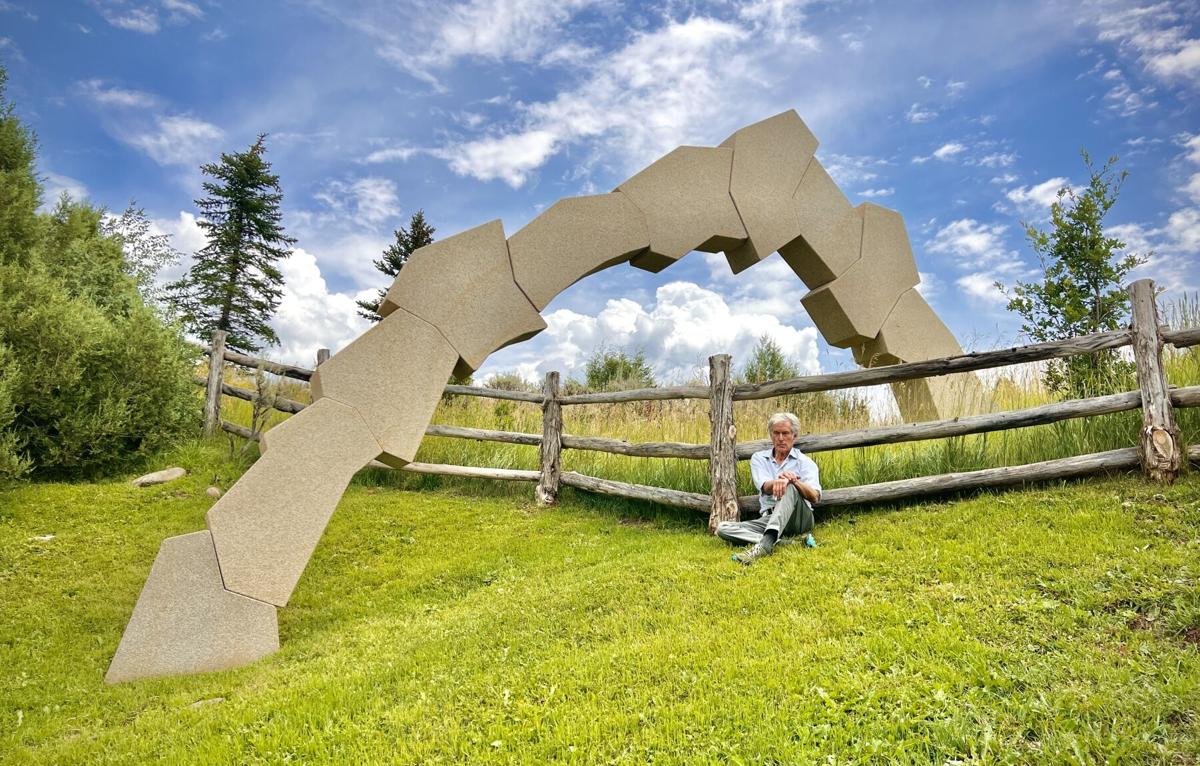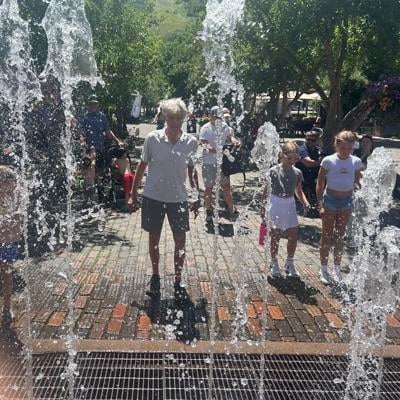

Very few artists have made as indelible a stamp on both cultural and physical institutions in Aspen in the last 50 years as Travis Fulton has made. He helped found Anderson Ranch Arts Center in Snowmass Village in 1969. In 1980, he and the late Nick DeWolf designed and built the first computerized dancing fountain, which remains a popular downtown Aspen attraction to this day.
Tonight, Fulton’s show, entitled “A Hoof Print In The Sand Slowly Filling With Water,” is on display at Aspen Collective, located in the Wheeler Opera House gallery space. The opening reception is from 6-10 p.m. The show runs until Aug. 24.
“I’ve always been impressed by the multi-faceted nature of Travis’ artistic practice,” said D.J. Watkins, owner of Aspen Collective. “He created the dancing fountain, architectural lamps, sculptures and not to mention his larger land-art projects and commissions across the Roaring Fork Valley. How he lives his life like a work of art is a testament to his genius.”
When Fulton was a boy, his father noticed that he was carving sculptures out of anything he could get his hands on. His father apprenticed him to John Angel, a world-renowned sculptor who created many of the bronzes on the front of the Cathedral of St. John the Divine in New York City.
When he was 16, Fulton’s great uncle Chester suggested that he become an engineer. Fulton’s father said to him, “You can either help people as an engineer by building bridges for them, or as an artist you can enrich their lives after they have crossed the bridge,” Fulton said in an interview. “I chose the latter option.”
Fulton first came to Aspen in 1963 In 1963 when he took a gap year from Brandeis University and worked for Franz Berko taking pictures on the mountain and developing them in the darkroom and then as a carpenter in the summer.
Fulton moved to Aspen in 1969 and with Paul Soldner and Brad Reed helped start Anderson Ranch Arts Center, where he taught drawing and sculpture for the next two years, while also building a bronze foundry.
In 1980, DeWolf and Fulton designed and built the world’s first computerized fountain in downtown Aspen. Using controlled rectifiers to make the water jets dance, it will not repeat the same 20-minute pattern for 75,000 years. Peter Hutter redrew the fountain’s infrastructure in the 1980s and again in 2015.
The body of work on display at Aspen Collective is a product of a horseback trip across Kenya that Fulton took and is comprised entirely of sculptures.

“The work represents the timeless forms and energies encountered there,” Fulton said. “With abstraction, reason and imagination flow together as myth. I am drawn to integration of natural forms with the elements of primitive sculpture — to their formal simplicity, coherence and savage expressiveness.”
Fulton said that with each piece he creates, he channels a specific emotion and then tries to create pieces that are minimalistic but elegant.
“Each individual work arises out of emotions and thoughts I deal with, and I aim to incorporate these elements in a way that leaves out everything that is not essential, and emphasizes everything that is essential,” he said.
Fulton has been making art for roughly 70 years. When asked what advice he would impart on a young artist, he responded, “Be confident in the adventure of your mind.”